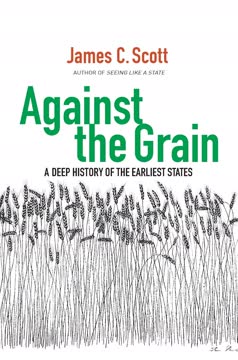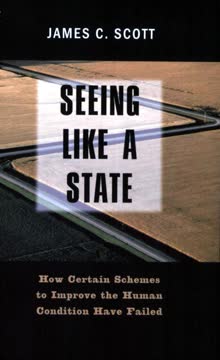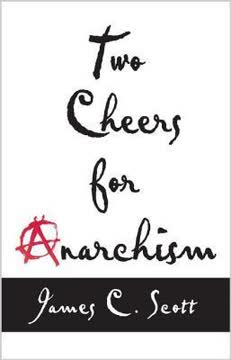Key Takeaways
1. The Standard Narrative of Civilizational Progress Is Fundamentally Flawed
Given what we now know, much of this narrative is wrong or seriously misleading.
Challenging assumptions. The traditional story posits a linear progression from hunter-gatherers to nomads, then farmers, leading inevitably to settled life, civilization, and the state. This narrative, deeply embedded in our understanding, assumes each step was a clear improvement in well-being, leisure, and social order. However, recent archaeological and historical evidence contradicts these assumptions.
Sedentism preceded farming. Contrary to the idea that agriculture enabled settled life, evidence shows sedentism occurred much earlier in resource-rich areas like wetlands, long before widespread farming. Furthermore, states emerged millennia after agriculture and sedentism were established, undermining the notion that they were immediate or necessary outcomes.
Agriculture's downsides. The shift to agriculture was not a sudden, universally desired leap forward. It was often slow, reversible, and carried significant costs, including increased labor, poorer diet, and worse health compared to diverse foraging lifestyles. The idea that people eagerly abandoned mobility for farming is also challenged by historical resistance to settlement.
2. Domestication Was a Long Process Transforming Fire, Plants, Animals, and Humans
One might arguably extend this argument to the early agrarian states and their patriarchal control over the reproduction of women, captives, and slaves.
Beyond plants and animals. Domestication, broadly understood, is the process by which humans gain control over the reproduction of other species. This began long before agriculture with fire, used for landscape management and cooking, fundamentally altering human biology and diet. The domus (household) became a new evolutionary module.
Co-evolution in the domus. The concentration of humans, domesticated plants (like wheat and barley), and animals (sheep, goats, pigs) in settlements created a unique environment. This led to rapid genetic and morphological changes in domesticates, making them dependent on humans, but also transformed humans through changes in diet, activity patterns, and exposure to new pathogens.
Extending control. The state, building on this foundation, extended this logic of control over reproduction to its human subjects. This included managing the reproduction of women within patriarchal families and, crucially, controlling the labor and reproduction of war captives and slaves, treating them as a form of "domesticated" human resource.
3. Early Sedentism and Towns Flourished in Wetlands, Not Arid Lands Requiring Irrigation
The prevailing view that "making the desert bloom" by irrigated agriculture was the foundation of the first substantial sedentary communities, however, turns out to be mistaken in nearly every particular.
Wetlands as cradles. The traditional view held that early towns arose in arid river valleys, requiring state-organized irrigation to support dense populations. However, the earliest large, permanent settlements in Mesopotamia (like Eridu and Uruk in their early phases) were located in rich deltaic wetlands.
Abundant, diverse resources. These wetland environments provided a dense and diverse array of wild resources:
- Fish, birds, and turtles
- Edible plants (reeds, sedges, water lily)
- Migrating game
This abundance supported large, sedentary populations without intensive agriculture or complex irrigation systems.
Resilience and mobility. Wetland inhabitants exploited multiple ecological zones, buffering them against reliance on a single food source. Their mobility within the watery landscape, using boats, allowed them to access resources across different areas and seasons, a stark contrast to the fixed-field agriculture later associated with states.
4. Agriculture, Especially Grain Farming, Meant More Drudgery and Worse Health
Agriculturalists, on the contrary, have never looked so bad-in terms of their diet, their health, and their leisure.
Increased labor. Compared to hunting and gathering, which often involved bursts of intense activity followed by leisure, fixed-field agriculture demanded significantly more labor: clearing, tilling, sowing, weeding, harvesting, and processing. This increased drudgery was likely adopted out of necessity (population pressure, resource decline, coercion) rather than choice.
Nutritional decline. The shift to a diet heavily reliant on one or two cereal grains led to nutritional deficiencies compared to the broad-spectrum diet of foragers. Skeletal remains of early farmers show:
- Shorter stature
- Signs of malnutrition (e.g., iron-deficiency anemia)
- Increased tooth decay and bone pathologies
Reduced leisure and health. While agriculture could support larger populations, it often did so at the cost of individual health and leisure time. The romanticized image of the yeoman farmer enjoying the fruits of his labor is largely a later construct, not reflective of the harsh realities faced by early agriculturalists.
5. Early States Were Epidemiological Hotbeds Prone to Disease Collapse
Epidemic disease is, I believe, the 'loudest' silence in the Neolithic archaeological record.
Crowding diseases. The unprecedented concentration of people, livestock, and waste in early settlements created ideal conditions for the emergence and spread of infectious diseases previously unknown or rare in dispersed populations. Diseases like measles, mumps, smallpox, and influenza likely appeared for the first time.
Zoonotic leap. The close proximity of humans and domesticated animals facilitated the jump of pathogens across species barriers, leading to new zoonotic diseases. The "multispecies resettlement camp" was a perfect environment for this, with humans sharing diseases with:
- Livestock (sheep, goats, cattle, pigs)
- Commensals (rats, mice, sparrows)
- Their parasites (fleas, lice, ticks)
Trade and warfare vectors. State activities like long-distance trade and warfare (especially involving the movement of captives and armies) acted as major vectors, spreading diseases between previously isolated populations. While hard archaeological evidence is scarce, devastating epidemics likely caused many sudden collapses of early state centers.
6. Cereal Grains Were the Unique, Essential Tax Crop for Early States
History records no cassava states, no sago, yam, taro, plantain, breadfruit, or sweet potato states.
Ideal for appropriation. Unlike root crops or legumes that ripen unevenly or are hidden underground, cereal grains (wheat, barley, rice, millet, maize) grow above ground and ripen predictably and simultaneously. This makes them uniquely visible, assessable, and easy for state officials to monitor and confiscate as taxes.
Measurable and storable. Grains are easily measured by volume and weight, making accounting and rationing straightforward. They can be dried and stored for long periods, providing a reliable surplus to feed non-producers (elites, soldiers, artisans) and provision armies or cities under siege.
Transportable wealth. Grains have a high value-to-weight ratio compared to many other foodstuffs, making them suitable for bulk transport, especially by water. This allowed states to extract resources from a wider hinterland, expanding their economic base beyond the immediate vicinity of the capital.
7. Early States Relied Heavily on Coercion and Unfree Labor to Survive
Bondage appears to have been a condition of the ancient state's survival.
Compelling surplus production. In early agrarian societies, where land was relatively abundant and alternative subsistence options existed, people were not inherently motivated to produce a surplus beyond their needs. States had to compel this production through various forms of unfree labor.
Forms of bondage. Early states utilized a mix of coerced labor systems:
- War captives and chattel slavery
- Debt bondage
- Forced resettlement of conquered populations
- Corvee labor (mandatory public works)
- Communal tribute and serfdom
Manpower imperative. Population was the key resource for early states (for labor, taxes, and soldiers). States actively sought to acquire and retain people, often through warfare aimed at capturing populations rather than territory. Flight from the state was a constant concern, leading to laws and measures to prevent it.
8. Writing Was Primarily a Technology of State Control and Legibility
To be governed is to be at every operation, at every transaction, noted, registered, counted, taxed, stamped, measured, numbered, assessed, licensed, authorized, admonished, prevented, reformed, corrected, punished.
Bookkeeping, not literature. The earliest forms of writing, like Mesopotamian cuneiform, were not initially developed for literature, history, or religion. They were tools of state administration, used for:
- Recording taxes and tribute
- Managing labor gangs and rations
- Inventorying resources (grain, livestock, people)
- Standardizing weights, measures, and work norms
Making society legible. States needed to make their populations and resources visible and accountable for effective appropriation. Writing facilitated this by creating standardized categories, lists, and records, allowing rulers to track and manage their realm from a distance.
Fragile as the state. This early literacy was largely confined to a small scribal class serving the state. When states collapsed, administrative writing often disappeared or drastically declined, suggesting it was a technology tied to state function rather than a universal cultural achievement.
9. Early States Were Inherently Fragile and Prone to Collapse
When, against the odds, it is built to the apex, the audience holds its breath as it sways and trembles, anticipating its inevitable collapse.
Structural vulnerabilities. Building a state atop the fragile grain-and-manpower complex introduced new risks. Dependence on a single annual harvest made states vulnerable to:
- Drought, floods, pests, and crop diseases
- Soil exhaustion and salinization from intensive farming
- Deforestation and siltation from resource extraction
Acute and chronic threats. States faced both sudden catastrophes (epidemics, major floods, invasions) and slower, insidious problems (environmental degradation, declining yields, population flight). These multiple pressures meant that states often had a short lifespan, with periods of collapse or fragmentation being common.
Overexploitation of the core. States often squeezed the most productive areas closest to the capital hardest for resources, especially in times of crisis. This overexploitation could deplete the core region, provoke resistance or flight, and ultimately undermine the state's own foundation.
10. "Collapse" Often Meant Disassembly and Could Improve Human Well-being
Why deplore "collapse," when the situation it depicts is most often the disaggregation of a complex, fragile, and typically oppressive state into smaller, decentralized fragments?
Not always catastrophic. The term "collapse" often carries negative connotations of civilizational ruin. However, the disappearance of a state center did not necessarily mean a demographic crash or a loss of culture (though it might mean a loss of monumental architecture and elite literacy).
Dispersal and decentralization. "Collapse" frequently involved the dispersal of populations from vulnerable urban centers to smaller, more resilient settlements or a return to more mobile subsistence strategies. This decentralization could lead to:
- Reduced exposure to epidemics
- Lower tax burdens and less forced labor
- Greater physical mobility and freedom
- A potential improvement in diet and health
Emancipation from the state. For many state subjects, particularly those in bondage or facing heavy exploitation, the breakdown of state power may have been experienced as an emancipation rather than a tragedy. The "dark ages" that followed state collapses were often dark only from the perspective of the former state elites and their chroniclers.
11. Life Outside the State Was Often Better: The Golden Age of Barbarians
Finally, there is a strong case to be made that life outside the state -life as a 'barbarian' - may often have been materially easier, freer, and healthier than life at least for nonelites inside civilization.
Beyond state control. For millennia after the first states emerged, the vast majority of the world's population lived outside their direct control. These "barbarians" (a term used ironically to denote nonstate peoples) inhabited diverse geographies unsuitable for intensive grain farming and state control.
Advantages of the periphery. Life outside the state offered several potential advantages:
- Avoidance of taxes, conscription, and forced labor
- Greater physical mobility and freedom
- More diverse and often healthier diets
- Reduced exposure to epidemic diseases
Enhanced by states. The existence of states, while posing a threat, also created new opportunities for barbarians through trade and, paradoxically, as sites for lucrative raiding and tribute extraction. This period, before states achieved global hegemony, could be considered a "golden age" for many nonstate peoples.
12. Barbarians Were Not Primitives Left Behind, But Often Refugees and State Competitors
Many of a state's adjacent barbarian populations may well have been, in effect, refugees from the state-making process itself.
Secondary primitivism. "Barbarians" were not simply static, primitive groups who failed to civilize. Many were former state subjects who had fled the state's burdens (taxes, war, disease, oppression) and adopted non-state subsistence strategies and social organization. This "going over to the barbarians" was a common response to state fragility.
State-barbarian symbiosis. States and barbarians were often "dark twins," evolving in relation to each other. Barbarian groups, particularly mobile pastoralists, could become powerful competitors for the agrarian surplus, engaging in raiding, demanding tribute, or controlling trade routes.
Complex interactions. Relations were not just hostile. Barbarians engaged in extensive trade with states, supplying essential raw materials and goods. They also served as mercenaries for states, sometimes becoming integrated into the state's military or even conquering and ruling states themselves, demonstrating the fluid boundary between state and nonstate life.
Last updated:
FAQ
What is [Against the Grain: A Deep History of the Earliest States] by James C. Scott about?
- Deep history of early states: The book explores the origins, development, and fragility of the earliest agrarian states, focusing on how they formed around grain agriculture and population control.
- Challenges traditional narratives: Scott questions the idea that state formation was a natural or beneficial progression, highlighting the coercive and unstable nature of early states.
- Interdisciplinary synthesis: Drawing on archaeology, anthropology, history, and ecology, Scott connects diverse fields to provide a new perspective on state formation and its consequences.
Why should I read [Against the Grain] by James C. Scott?
- Revises common historical narratives: The book overturns the belief that agriculture and states naturally improved human well-being, showing that early states often exploited and harmed their populations.
- Insight into power and resistance: Scott offers a nuanced view of the relationship between states and nonstate peoples, revealing the complexities of freedom, coercion, and survival.
- Relevance to modern issues: By examining themes like coercion, environmental degradation, and social stratification, the book provides insights that resonate with contemporary political and social dynamics.
What are the key takeaways from [Against the Grain] by James C. Scott?
- Sedentism before domestication: Sedentary life and towns existed long before the domestication of plants and animals and the rise of states.
- States relied on coercion: Early states depended on forced labor, slavery, and tribute to produce surplus and maintain power.
- Fragility and collapse: Early states were vulnerable to ecological, epidemiological, and political pressures, often collapsing and fragmenting into smaller units.
- Life outside states: Nonstate peoples often enjoyed more freedom, better health, and diverse subsistence strategies compared to those within states.
What are the best quotes from [Against the Grain] by James C. Scott and what do they mean?
- "No slavery, no state": This quote underscores Scott's argument that early states fundamentally depended on various forms of bondage to function and survive.
- "Domestication as niche construction": Scott expands the concept of domestication to include humans shaping and being shaped by their environments, not just plants and animals.
- "Collapse as disassembly": He reframes state collapse as a process that often improved human welfare, rather than a tragic end, by dispersing populations and reducing coercion.
How does [Against the Grain] by James C. Scott challenge traditional views of state formation and agriculture?
- Sedentism predates agriculture: Scott shows that people lived in settled communities long before they domesticated plants and animals, challenging the idea that agriculture led directly to states.
- States as coercive, not progressive: He argues that early states were fragile, coercive, and often detrimental to the majority, rather than inevitable or beneficial.
- Dark ages reconsidered: The book suggests that periods of state collapse may have improved human welfare, contrary to the common view of "dark ages" as purely negative.
What is James C. Scott’s definition of domestication in [Against the Grain]?
- Broad concept of domestication: Scott defines domestication as an ongoing human effort to shape environments, including the use of fire, landscape modification, and the management of plants, animals, and even humans.
- Multispecies resettlement: Early villages were complex ecosystems involving humans, animals, plants, commensals, and parasites, all co-evolving.
- Humans as domesticated: He argues that humans themselves were domesticated by sedentism, crowding, and dietary changes, leading to physical and behavioral shifts.
What role did fire play in early human history according to [Against the Grain] by James C. Scott?
- Fire as a tool: Fire was humanity’s oldest and most powerful tool for reshaping landscapes, encouraging useful plants, and attracting prey.
- Enabled sedentism: The use of fire concentrated food resources, making it possible for humans to settle in previously inhospitable environments.
- Cooking and evolution: Cooking with fire made food more digestible and nutritious, contributing to human brain development and smaller digestive tracts.
Why did early states form only millennia after domestication and sedentism, according to [Against the Grain]?
- Long lag explained: Sedentism and domestication existed for thousands of years before states because people had diverse subsistence options and mobility, resisting full agricultural dependence.
- Ecological concentration required: States arose only where ecological conditions allowed dense, concentrated grain production and population.
- States needed taxable staples: Only cereal grains provided a measurable, storable, and divisible tax base suitable for state appropriation.
How did early states produce surplus and maintain power according to [Against the Grain] by James C. Scott?
- Surplus through coercion: Surplus production was not automatic; it required forced labor systems like slavery, debt bondage, and tribute to compel peasants to produce beyond subsistence.
- Control of the grain core: States held peasants in fertile core areas and prevented escape to maintain a steady labor supply.
- Replacement strategies: States waged wars, purchased slaves, and forcibly resettled communities to replenish their labor force.
What role did slavery and bondage play in early states as explained in [Against the Grain]?
- Central to state economies: Slavery and various forms of bondage were essential for producing surplus and maintaining state power.
- Labor for onerous tasks: Slaves and captives performed the most dangerous and degrading work, sparing free subjects and elites.
- War captives as resources: Captives were valued for their labor and reproductive potential, helping to sustain and grow the state's population.
Why were early states fragile and prone to collapse according to [Against the Grain] by James C. Scott?
- Ecological vulnerabilities: Dependence on a single annual cereal harvest made states susceptible to drought, flood, pests, and soil degradation.
- Epidemics and disease: High population density and close contact with animals facilitated the spread of infectious diseases, undermining state stability.
- Political and social pressures: Overexploitation of core populations risked provoking flight, rebellion, or depopulation, leading to cycles of collapse and decentralization.
How does [Against the Grain] by James C. Scott describe the relationship between early states and "barbarians"?
- Barbarians as nonstate peoples: These groups lived outside state control, practicing hunting, foraging, pastoralism, and shifting cultivation.
- Mutual dependence and conflict: States relied on barbarians for trade and raw materials, while barbarians raided states for plunder and slaves.
- Barbarians limited state growth: Their mobility and military pressure constrained state expansion and contributed to cycles of state collapse and decentralization.
- Golden age of barbarians: There was a long period when barbarians thrived by exploiting state wealth through raiding, trade, and protection rackets, often enjoying greater freedom and well-being.
Review Summary
Against the Grain challenges conventional narratives about early state formation and civilization. Scott argues that sedentary communities and agriculture predated states by millennia, and that early states were fragile, reliant on grain cultivation and slave labor. He posits that non-state "barbarians" often led healthier lives than their state-dwelling counterparts. The book explores themes of domestication, taxation, and the relationship between states and surrounding populations. While some reviewers praise its insights, others criticize its repetitiveness and potential ideological bias.
Similar Books

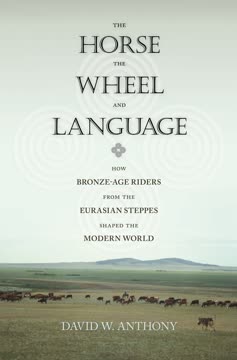
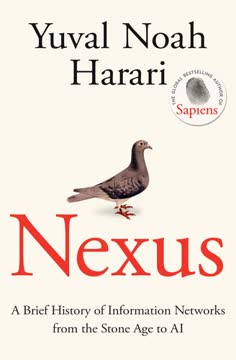
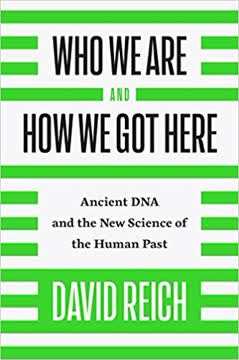

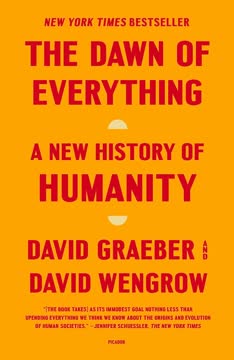
Download PDF
Download EPUB
.epub digital book format is ideal for reading ebooks on phones, tablets, and e-readers.
